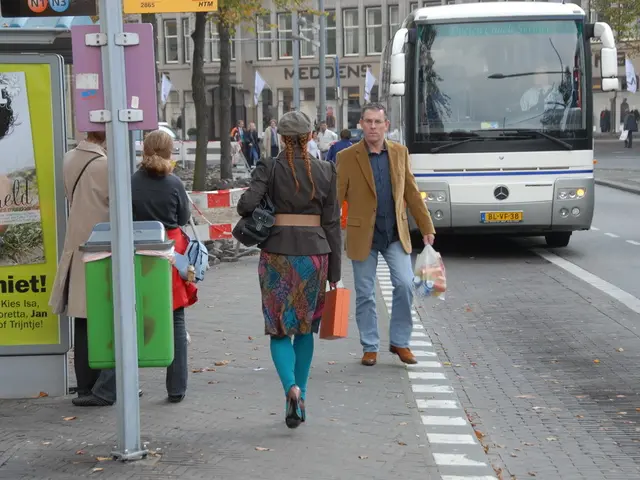Regional award for Tomsk scientists under 35 years of age has increased fivefold
Tomsk Boosts Education, Science, Health, and Culture Fund by Nearly Triple:
On Tuesday, deputies in the Tomsk regional legislature passed amendments to the regional law, significantly increasing the Tomsk Region's Education, Science, Health, and Culture Fund. This move nearly tripled the initial 2024 fund from 6.6 million rubles to 19.2 million rubles.
During the 41st meeting of the Tomsk Regional Duma, deputies, in two readings, modified the regional law "On Tomsk Region Awards in Education, Science, Health, and Culture," which was adopted in April 2024. The law was adjusted based on proposals from the Tomsk Regional Duma's Committee on Labor and Social Policy.
Speaking to the press, Tomsk Regional Duma Chairwoman Oksana Kozylovskaya explained, "Last year, when we were discussing changes to this law, recommendations for increasing the fund size were made by the deputies. We listened, and the governor issued the appropriate orders. These changes were considered and approved today."
Forty bright young minds receive Tomsk Region Awards
The Tomsk Region's governing body explained that, during the decision-making process, they relied on the practices of innovative regions—St. Petersburg, Kemerovo, Omsk, Irkutsk, and Novosibirsk to guide their actions.
According to the administration, the Tomsk Region Awards in Education, Science, Health, and Culture have been included in the national ranking of scientific and technological development of the region, where Tomsk currently occupies the 4th position[1]. They are also part of the Tomsk Region's Scientific and Technological Development Program as a motivating factor to improve the reputation of scientific and educational activities[2]. The awards are granted for innovative discoveries, scientific research, technology implementation, and student achievements in the mentioned fields.
While specific 2025 funding figures for Tomsk Region in these sectors are not detailed in the available sources, recent developments offer comparative insights into Russia’s regional innovation ecosystems.
For instance, the 2025 VYZOV Prize Roadshow targets Novosibirsk, St. Petersburg, Nizhny Novgorod, and Saratov, excluding Tomsk, to promote cutting-edge scientific research and attract talent[3]. This suggests strategic prioritization of these regions for technology-driven initiatives. Additionally, Tomsk universities, along with St. Petersburg institutions, are active participants in the Open Doors Scholarships[1][5], positioning Tomsk as a competitive hub for global academic recruitment.
Collaborative funds worth ~13B rubles and the Priority 2030 program concentrate on university-industry partnerships, with no specific allocations mentioned for Tomsk[3]. St. Petersburg and Novosibirsk frequently engage in similar federal programs due to their established tech corridors.
In comparison, Tomsk is known for its university system, such as Tomsk State University, and its participation in initiatives like the Open Doors scholarships[1]. St. Petersburg, on the other hand, hosts the VYZOV Roadshow and is home to globally ranked technical universities like ITMO[3][5].
[1] https://www.tut.by/society/815388.html[2] https://tomsk.kp.ru/daily/26763/4704197/[3] https://snob.ru/selected/entry/157045[5] http://www.tass.ru/mezhdunarodnaya-panorama/7231117
Incorporating Enrichment Insights: Tomsk’s academic prominence is underscored by its participation in large-scale initiatives like Open Doors scholarships and Tanzania-Russia scholarships, demonstrating strong government support for its academic institutions. However, its absence from the VYZOV Roadshow may indicate less centralized focus on Tomsk’s tech transfer capabilities compared to Novosibirsk or St. Petersburg.
- The Tomsk Regional Duma, for the 35 bright minds in the region, amended the regional law to significantly increase the Education, Science, Health, and Culture Fund, boosting it nearly threefold to 19.2 million rubles.
- Tomsk's Education, Science, Health, and Culture Awards have been granted for strong scientific research and innovative discoveries, positioning the region as a competitive hub for general news and education-and-self-development.
- In the health-and-wellness sector, Tomsk universities, like Tomsk State University, have been active participants in initiatives, such as the Open Doors Scholarships, fostering a strong science focus.
- Tomsk's politics may have played a part in its omission from the 2025 VYZOV Prize Roadshow, potentially resulting in less attention for the region's tech transfer capabilities compared to peers like Novosibirsk or St. Petersburg.
- While Tomsk is recognized for its academic institution system and global academic recruitment efforts, politically stronger regimes may have played a role in determining the allocation of collaborative funds and participation in federal programs, such as the Priority 2030 program.








